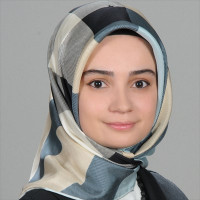Research Article
Aim & Scope
Necmettin Erbakan University Faculty of Law Journal aims to contribute to the national and international legal literature by publishing original and scholarly articles in the field of law. The journal addresses legal scholars and students by publishing articles on current legal issues and topics related to legal history. Through its coverage of contemporary legal issues and historical aspects of law, the journal appeals not only to legal academics and students, but also to professionals in the field of law, such as lawyers, judges and prosecutors.
Our journal, which is published twice a year in June and December as a regular issue and once a year in December as a special issue on a topic determined by the journal, accepts articles in the field of law and is published electronically. It is a peer-reviewed journal that accepts articles in the fields of public, private and financial law, as well as case reviews, legislative assessments, book reviews and translations. The journal is published in Turkish, English, German and French. For special issues, the language of publication is limited to English, German and French.
Submitting articles
Submitted articles should be in line with the aims and scope of the journal. They must be original, unpublished and not under consideration elsewhere, and each author must approve the content and submission of the article for consideration. Necmettin Erbakan University Faculty of Law Journal, published twice a year, is a peer-reviewed journal and articles are reviewed by at least two referees. The journal accepts a maximum of one article per author per year. Submission deadlines are 15 April for the June issue and 15 October for the December issue.
Readership
The target readership includes legal practitioners, experts, researchers and postgraduate students in law and related fields. The journal aims to contribute to the widespread culture of continuous professional development and research.
Copyright
The copyright of the works published in the Necmettin Erbakan University Law School Journal belongs to the authors. Authors allow Necmettin Erbakan University Faculty of Law Journal to publish their submitted intellectual work under the Creative Commons Attribution-NonCommercial 4.0 International (CC BY-NC 4.0) licence.
Originality of articles
Necmettin Erbakan University Faculty of Law Journal does not accept previously published works. However, occasionally articles published in a foreign language may be considered.
Author Guidelines
Necmettin Erbakan University Faculty of Law Journal (NEÜHFD) Writing Guidelines
The contact address for the journal: konyahukukdergi@gmail.com
Articles should be prepared in "Microsoft Word." The main text should be in Times New Roman 12 points, normal style, while footnotes should be in Times New Roman 10 points, normal style, and submitted to the editor via DERGİPARK. Citation should follow the footnote method, and references should be made as shown in the examples below. Page structure should have margins of 2.5 cm at the top and bottom, and 2 cm on the right and left. The text should be justified. As a general rule, articles, along with the bibliography, should be between 3000 to 15,000 words. Line spacing should be 1.15, with a 10-point space after each paragraph. The first line of paragraphs should be indented by 1.25 cm. The bibliography should be arranged alphabetically by authors' last names. On the first page of the article:
First, the Turkish title of the article should be in bold and 14 points.
One line space
Bold "Abstract" in 12 points
Abstract of at least 125 to a maximum of 300 words in 11 points
At least 3 and a maximum of 5 keywords
One line space
The foreign language title of the article in bold and 14 points
One line space
Bold "Abstract" in 12 points
Abstract of at least 125 to a maximum of 300 words in 11 points
At least 3 and a maximum of 5 keywords in a foreign language
One line space
Start the INTRODUCTION section without skipping a page, and titles of INTRODUCTION and CONCLUSION should not be numbered. All headings except the main title of the article should be in 12 points and bold, and the structuring should be in the form of I/A/1/a. Refer to the last example text for more details.
Citations for the works used should appear in the bibliography as follows (For sources not covered in the examples, the Modern Language Association (MLA) citation system can be used. For detailed information on MLA citation, visit: https://owl.purdue.edu/owl/research_and_citation/mla_style/mla_formatting_and_style_guide/mla_formatting_and_style_guide.html):
Books:
Last Name, First Name. Title of the Work in italics, Edition, Publisher, Place of Publication, Year.
Example: Russell, Stuart Jonathan, and Norvig, Peter. Artificial Intelligence: A Modern Approach, Pearson, United Kingdom, 2021.
Articles:
Last Name, First Name. Title of the article in quotation marks, Name of the Journal in italics, Volume, Issue, Year, page range.
Example: Tatar, Samet. "‘The Stabilization Clause’ of The Baku-Tbilisi-Ceyhan Pipeline Agreements: A Legal Review", Necmettin Erbakan Üniversitesi Hukuk Fakültesi Dergisi, V. 5, No. 2, 2022, p. 465-481.
Internet sources, reports, dictionaries, etc., should be prepared similarly to the examples above. In such sources, if there is an author, the author is mentioned; otherwise, the name of the institution can be given. For daily newspapers, when providing the date, include the month and day.
Examples:
Akbulak, Sevinç. Ulusal Varlık Fonları(Sovereign Wealth Funds): Gelişmeler ve Düzenleme Çalışmaları, 2008, Sermaye Piyasası Kurulu Araştırma Raporu.
Alaska Permanent Fund Corporation. Historical Timeline, 2018, https://apfc.org/who-we-are/history-of-the-alaska-permanent-fund/historytimeline/, (Accessed: April 30, 2018).
O’neal, Michael. A New Breed of SWF Without The Wealth. Kuwait Times, (18.03.2017), s. 3.
In works prepared by more than one author, the full names of all authors should be written.
Example: Oğuzman, M. Kemal / Seliçi, Özer / Oktay-Özdemir, Saibe. Eşya Hukuku, Gözden Geçirilmiş 11. Baskı, Filiz Kitabevi, İstanbul, 2006.
Citations for the sources used should be shown as footnotes at the end of each page. In the first citation, all information in the bibliography should be included. The page used should be located at the end of the citation.
Example: Ayhan, Rıza. “Tasarruf Mevduatı Sigorta Fonunun Hukuki Mahiyeti”, Gazi Üniversitesi Hukuk Fakültesi Dergisi, Prof. Dr. Naci Kınacıoğlu’na Armağan, V. I, No. 2, 2013, p. 31.
In subsequent citations to the same work:
For books: Last Name, page number.
For articles: Last Name, page number.
Example: Kapani, p. 21. Ayhan, p. 36.
If more than one work by the same author is used; if the years of the works are different, the year should be indicated. If the years are the same, the title of the work should be abbreviated to distinguish it from the author's other works.
Example: Gözler, 2010, p. 43.
Gözler, Anayasa Hukukunun ..., p. 76.
EXAMPLE ARTICLE STRUCTURE
MAIN TITLE (14 POINTS)
Abstract (12 Points)
Abstract should be at least 125 to a maximum of 300 words.
Keywords: At least five keywords separated by commas. (11 Points)
FOREIGN LANGUAGE MAIN TITLE (14 POINTS)
Abstract (12 Points)
Abstract in a foreign language should be at least 125 to a maximum of 300 words.
Keywords: At least five keywords in a foreign language separated by commas. (11 Points)
INTRODUCTION
......
I. First Subtitle Section
........
A. Second Subtitle Section
.........
Third Subtitle Section
........
Third Subtitle Section
.........
B. Second Subtitle Section
.........
II. First Subtitle Section
................
A. Second Subtitle Section
............
Third Subtitle Section
........
Third Subtitle Section
............
B. Second Subtitle Section
................
CONCLUSION
....................
BIBLIOGRAPHY
Oğuzman, M. Kemal / Seliçi, Özer / Oktay-Özdemir, Saibe. Eşya Hukuku, Gözden Geçirilmiş 11. Baskı, Filiz Kitabevi, Istanbul, 2006. (12 Points and hanging 1.25 cm).
Ethical Principles and Publication Policy
Necmettin Erbakan University Faculty of Law Journal (NEÜHFD) Publication Policy
1. Necmettin Erbakan University Faculty of Law Journal (NEÜHFD) is a peer-reviewed journal published electronically twice a year. The double-blind peer review system is applied with at least two referees.
2. Submitted articles should not have been published elsewhere or be under consideration for publication elsewhere. Submitting an article to our journal implies a commitment on the part of the author. Submitted articles will be checked for plagiarism and similarity of more than 20% will not be accepted.
3. Although the main language of the journal is Turkish, articles in English, German and French are also accepted.
4. Articles submitted to the journal should include abstracts of a minimum of 125 words and a maximum of 300 words, along with titles and a minimum of three and a maximum of five keywords in the languages of the abstracts. For articles written in Turkish, an abstract in English, German or French is required in addition to the Turkish abstract. For articles written in a foreign language, abstracts in the language of the article and in Turkish are required.
5. Authors' names, titles, affiliations, e-mail addresses and ORC-IDs should be clearly and accurately stated in the attached file entitled "Author Information of the Article".
6. Authors are considered to have conducted a thorough review of the articles they submit to the journal and presented them as "ready for publication". During the preliminary review by the Editorial Board, articles that do not meet the scientific criteria (in terms of content) and the journal's writing rules, or that contain significant writing errors beyond the norm, will be rejected.
7. Articles that have been pre-reviewed by the Editorial Board are sent to two referees via the blind peer review system, with the authors' names removed from the text. Authors are not informed of the referees to whom the article is sent. If the referees request revisions in their reports, the author can only make changes within the specified corrections. These changes must be made within 30 days, otherwise the Editorial Board reserves the right to reject the article. After the suggested corrections have been made, the author may request a new peer review according to the peer reviewers' recommendations. If one referee gives a positive opinion and the other a negative one, the article will be sent to a third referee or accepted for publication at the decision of the Editorial Board/Chief Editor. Articles that are not published as a result of refereeing or editorial decisions will not be returned to the author and the author will be informed of the situation.
8. After acceptance for publication, but before publication, the author has the right to make changes to the manuscript in the event of a change in legislation. In this case, depending on the extent of the changes, the Editorial Board may decide to return the manuscript to the referee. The same rule applies if there is a change in the law concerning articles in the evaluation phase.
9. In addition to articles that have undergone peer review, book reviews, legislative assessments, information notes and analyses of court decisions may also be published in the journal. Acceptance or rejection of such articles is at the discretion of the Editorial Board.
Necmettin Erbakan University Faculty of Law Journal (NEÜHFD) adopts the PUBLICATION ETHICS principles accepted by the Committee on Publication Ethics (COPE). For the Turkish translation of the flowchart related to these principles, please see: https://publicationethics.org/files/Full_set_of_flowcharts_Turkey_2017%20%281%29.pdf
All submitted articles must be original and unpublished, not under consideration for review elsewhere. Each article undergoes a double-blind review process by one of the editors and at least two referees. Plagiarism, duplication, fake authorship/denied authorship, research/data fabrication, article slicing, publishing by slicing, copyright infringement, and concealing conflicts of interest are considered unethical behaviors.
Articles submitted to the journal should not have been published elsewhere or be under consideration for publication elsewhere; submitting an article to our journal implies the author's commitment to this. Submitted articles undergo plagiarism checks, and a similarity ratio of more than 20% is not accepted.
All articles that do not comply with accepted ethical standards are removed from publication. This includes articles discovered to contain possible post-publication breaches of rules.
The compliance of articles with ethical principles is the responsibility of the authors. Authors are obliged to adhere to the following ethical principles:
In the planning, review, and execution of the research, principles of integrity, quality, and transparency should be ensured.
The research team and participants should be fully informed about the purpose, methods, and potential uses of the research, as well as the requirements for participation and any associated risks.
The confidentiality of information provided by research participants and the anonymity of respondents should be ensured. The research should be designed to preserve the autonomy and dignity of research participants.
Research participants should voluntarily participate in the research and should not be under any form of coercion.
Measures should be taken to prevent harm to participants, and the research should be planned to avoid putting participants at risk.
Transparency should be maintained regarding research independence, and conflicts of interest should be disclosed if present.
In experimental studies, written informed consent should be obtained from participants deciding to participate in the research. For children, wards, or individuals with confirmed mental illness, consent should be obtained from their legal guardian.
If the study is to be conducted at any institution, approval should be obtained from that institution.
In studies involving human subjects, the "methods" section should indicate that informed consent was obtained from participants and that ethical approval was obtained from the institutional review board.
Within the framework of Research Ethics, the following are research studies that require Institutional Review Board (IRB) approval for evaluation in the journal:
1. All types of research involving the collection of data from participants using qualitative or quantitative approaches, utilizing techniques such as surveys, interviews, focus group studies, observations, experiments, and interviews,
2. Experimental or other scientific use of humans and animals (including materials/data),
3. Clinical research conducted on humans,
4. Research conducted on animals,
5. Retrospective studies in accordance with the Personal Data Protection Law.
In this context, for studies to be considered in our journal:
1. In case presentations, it should be indicated that the "Informed Consent Form" has been obtained,
2. Permission should be obtained from the owners for the use of scales, surveys, and photographs owned by others, and it should be stated,
3. Compliance with copyright regulations for ideas and works of art used,
4. Editors ensure the protection of human and animal rights in the evaluated studies. Editors have the responsibility to reject studies where there is no approval from the ethics committee for the topics used in the study. In studies requiring ethics committee approval, information about the permission (committee name, date, and number) should be included in the method section and also on the first/last page of the article. In case presentations, information about obtaining informed voluntary consent/consent form should be included in the article.
The scientific and ethical compliance of the articles is the responsibility of the authors. The author must ensure that the article is original, not previously published elsewhere, and not under consideration for publication in another language or place. Copyright laws and agreements in practice should be observed. Copyrighted materials (such as tables, figures, or extensive quotes) should be used with the necessary permission and acknowledgment. The works of other authors, contributors, or utilized sources should be appropriately used and cited in references.
All authors must have an academic and scientific direct contribution to the submitted article. In this context, an "author" is seen as someone who significantly contributes to the conceptualization and design of a published study, the acquisition, analysis, or interpretation of data, and the critical review of the writing or its content. Other conditions for being an author include planning, performing, and/or revising the work presented in the article. Funding, data collection, or general supervision of the research group alone does not entitle authorship. All individuals identified as authors must meet all the criteria listed, and any individual meeting the above criteria may be identified as an author. The order of authors' names should be a joint decision. All authors must specify the author order in the Copyright Notice, signed.
All individuals who do not meet sufficient criteria for authorship but contribute to the work should be listed in the "acknowledgments/information" section. Examples include individuals providing technical support, assisting in writing, or offering general support, financial, and material support.
All authors must disclose financial relationships, conflicts of interest, and competition that could potentially affect the results or scientific evaluation of the research. If an author identifies a significant error or mistake in their published article, they are responsible for promptly contacting the editor to collaborate on correction or retraction.
The chief editor evaluates articles regardless of the authors' ethnicity, gender, sexual orientation, nationality, religious beliefs, or political philosophy. They ensure that submitted articles undergo a fair double-blind peer review process. The chief editor guarantees that all information related to submitted articles will remain confidential until the article is published. They are responsible for the overall quality of content and publication. In case of need, the chief editor should publish an erratum or make corrections.
The chief editor does not allow conflicts of interest among authors, editors, and referees. They have complete authority in referee assignment and are obligated to make the final decision regarding articles to be published in the journal.
Referees should have no conflicts of interest related to the research, authors, and/or financial supporters of the research. They must arrive at an impartial judgment based on their evaluations. Referees should ensure the confidentiality of all information related to submitted articles and report to the editor if they notice any copyright infringement or plagiarism by the authors. If a referee does not feel qualified to review an article's subject matter or cannot provide a timely response, they should inform the editor and request not to be included in the referee process.
During the evaluation process, the articles sent to referees are considered the private property of the authors, and this communication is considered privileged. Referees and members of the editorial board cannot discuss articles with other individuals. The identity of referees should be kept confidential. In some cases, at the editor's discretion, the comments of relevant referees can be sent to other referees who have reviewed the same article to enlighten them in the process.
Price Policy
Necmettin Erbakan University School of Law Review does not charge any fees at any stage of the articles, including submission, evaluation and publication.
Authors do not pay article processing fee for the articles they submit to the journal. In addition, the authors are not paid royalties.
All expenses of the journal are covered by Necmettin Erbakan University.According to the publication policies of the Necmettin Erbakan University Faculty of Law Journal, sponsorship and advertising are not accepted.
Indexes
Journal Boards
Editor in Chief

Field Editors






Spelling and Language Editors


Layout Editors
Publication Editors
Editorial Board



Advisory Board

















